|
|
|
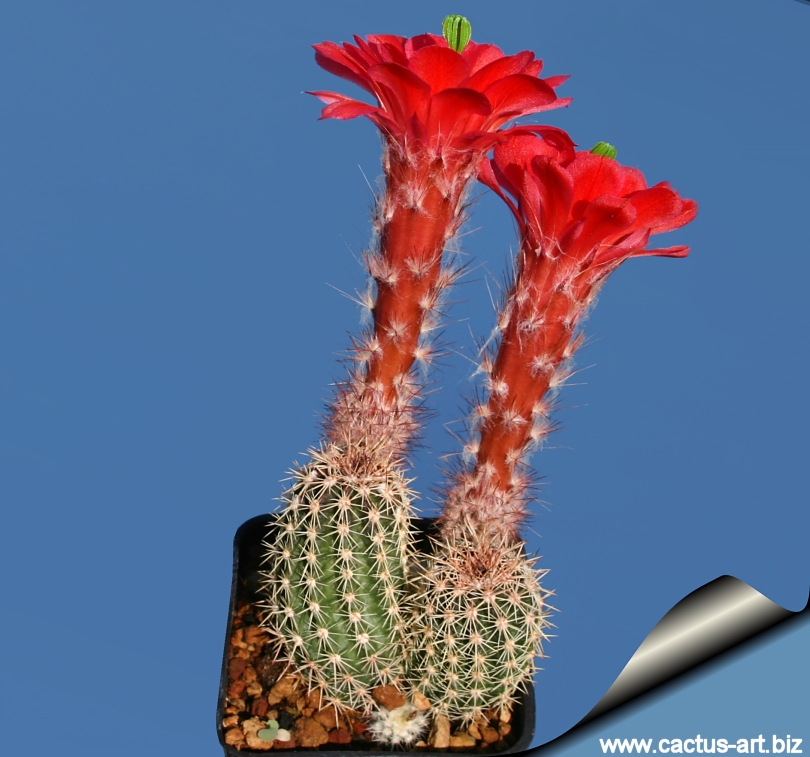
Echinocereus plomosus (E.
polyacanthus ssp. huitcholensis)
L768 Plomosos, Sinaloa, Mexico 1000-1300m Mexico
The long tubed flowers are a beautiful deep red.
They bloom from April through June, and are very showy.
|
|
Description: Nowadays Echinocereus plomosus is
considered none other
than a form of the very variable species,
Echinocereus polyacanthus.
It is a highly branching
plant that forms
large clumps and blooms abundantly,
just as a small
specimen .
Stems: Light green, cylindrical,
tapering
towards
the tip, each stem 10-20 cm tall, 4-5 cm in diameter.
Ribs: 9 to 13, usually 10 well defined ones, low, either
tuberculate or not.
Areoles: Approximately 1-1.5 cm apart, and somewhat woolly.
Central spines: 1 to 7, yellowish or brown, expanded basally,
straight, elongated, becoming grey as they age, reaching up to 5 cm
long, but variable in length.
Radial spines: 6 to 17 (usually about 12), dirty white to
brownish, overlapping, up to 1 cm long but often much shorter.
Flowers: Diurnal, arising near the stem's apex, tubular to
funnel-form, brilliant deep red with a yellowish or
whitish colored throat, 10 cm long, 5-6 cm in diameter.
Floral remains
are difficult to detach from the plant and can set up stem rot.
Blooming season:
Apr-Jun, the flowers remain open for 2 or 3
days.
Blooming generally begins 4 to 5 years
after sowing, as the plant matures.
|
|
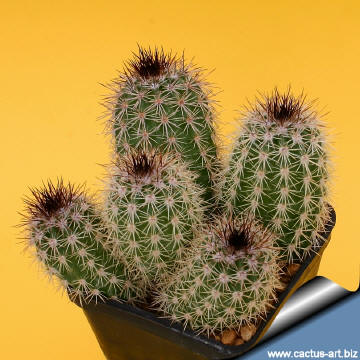 |
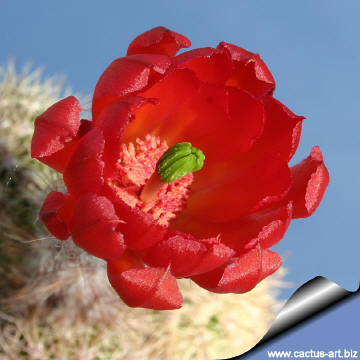 |
|
. |
|
 |
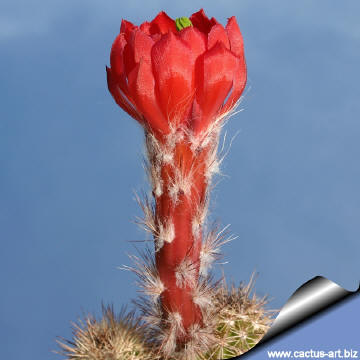 |
|
Advertising
|
|
|
|
|
|
|
Family:
Cactaceae (Cactus
Family) Echinocereus plomosus ( Köhres Catalog
1984.
nom. nud. )
Scientific name:
Echinocereus polyacanthus v.
huitcholensis (Weber) Taylor 1988
Origin: Plomosos, Sinaloa, Mexico 1000-1300m Mexico
(Field number Lau 768)
Habitat:
It grows in crevices in basalt rocks.
Conservation status: Listed in
CITES appendix 2.
Synonyms:
- Echinocereus huitcholensis (F.A.C.Weber) Gürke
1906
- Cereus huitcholnesis Weber 1904
- Echinocereus acifer ssp. huitcholensis (Weber) Lange
1994:109.
- Echinocereus polyacanthus var. acifer fa. Huitcholensis
Parker 1996:4 nom. nud.
- Echinocereus polyacanthus ssp. huitcholensis (Weber)
Taylor 1997
- Echinocereus
polyacanthus Engelmann 1848a
- Echinocereus triglochidiatus
var. polyacanthus (Engelmann) Benson 1944
Common Name: Giant Claret-Cup Cactus, Salmon-Flowered Hedgehog,
Spiny Hedgehog
|
|
|
|
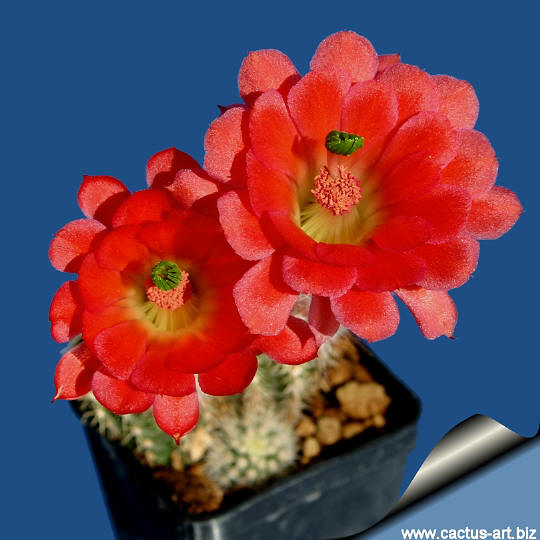
Cultivation:
This cactus is
cultivated and highly
priced for its flowers. It is among the easiest species to grow, flower
and propagate. Water
regularly from March to
October. Rot prone in winter, it needs good drainage. Claret Cups require strong sunlight to
maintain a healthy appearance,
and a harsh "dry and cool" winter environment combined with maximum
light exposure enhances spring flower production. Frost Tolerance:
Hardy to -5° C.
Propagation: Seeds
(usually), it also can be grown from cuttings, as it branches profusely from the
base.
Photo of conspecific taxa, varieties, forms and cultivars of
plants belonging to the
Echinocereus polyacanthus
complex
(This
Taxon
has lots of synonyms, with several controversial varieties and
subspecies, and comprises a multitude of different forms, but where each form
is linked to others by populations of plants with intermediate
characteristics):

 |
|